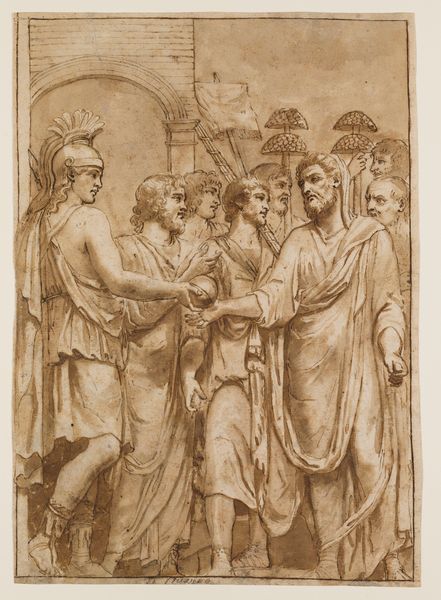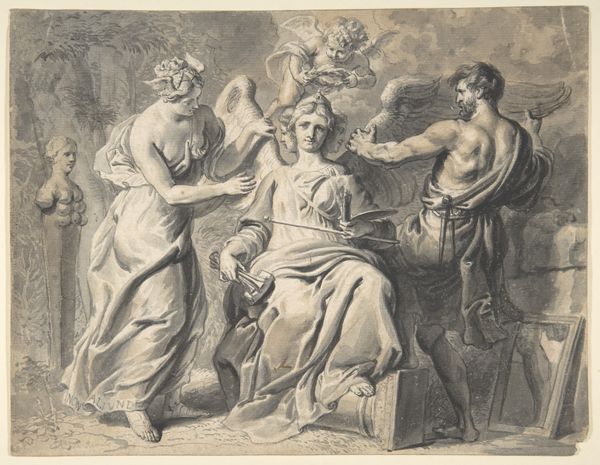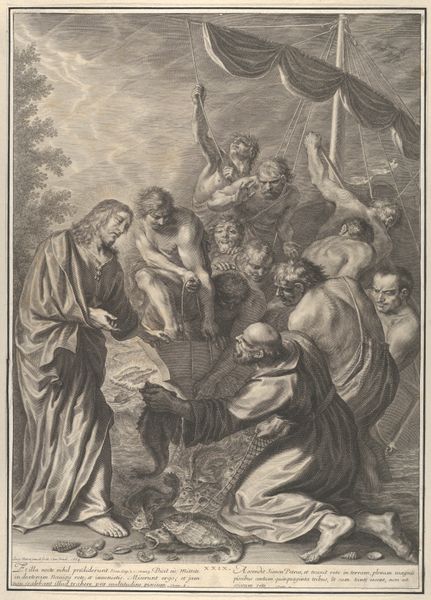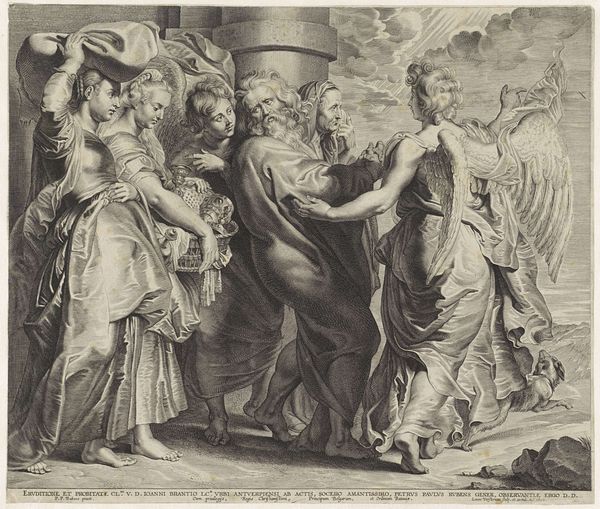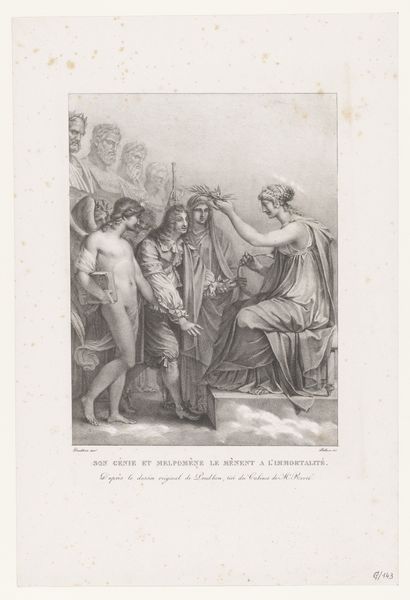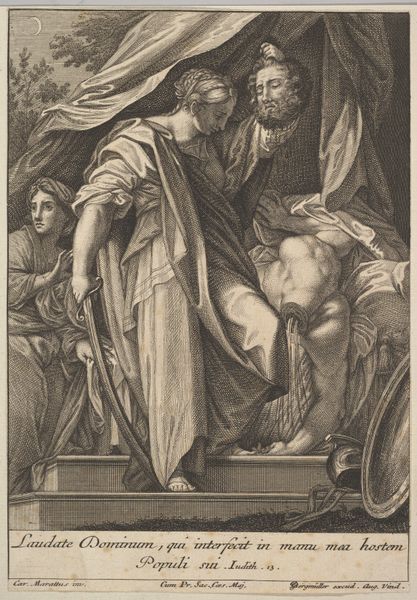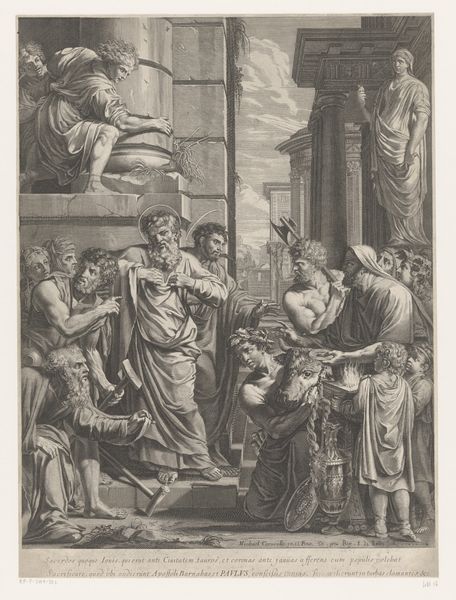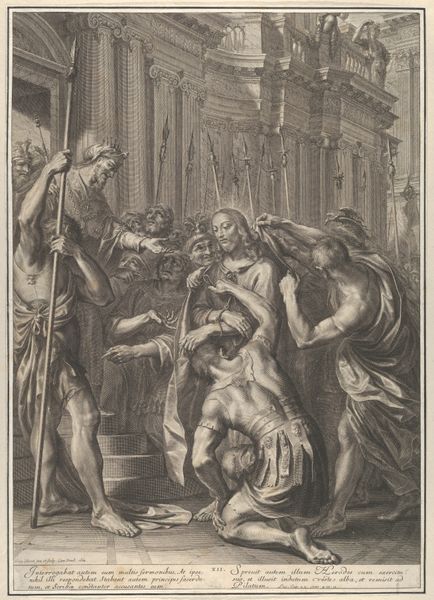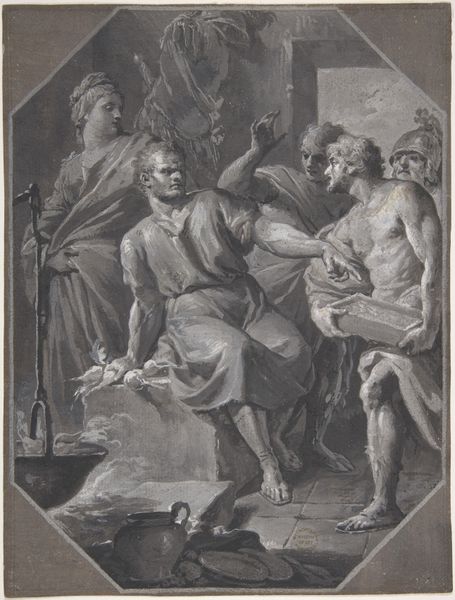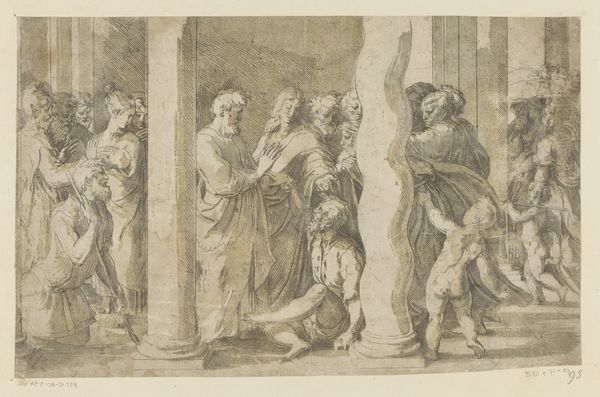
drawing, print, engraving
#
drawing
#
neoclacissism
#
allegory
# print
#
figuration
#
form
#
line
#
history-painting
#
engraving
Dimensions: Overall: 19 11/16 x 13 3/4 x 2 3/4 in. (50 x 35 x 7 cm)
Copyright: Public Domain
Curator: Before us is an engraving titled "Oeuvres de Jean Racine," dating back to 1801. It’s currently part of the Metropolitan Museum of Art's collection. What's your initial take? Editor: First thought? Grandiose! The whole scene feels plucked from a particularly eloquent history book, all flowing robes and theatrical gestures. It's dramatic, in the best possible sense of the word. Curator: Absolutely. Notice how Racine is guided toward immortality by his genius and Melpomene, the muse of tragedy. Look above—busts of classical thinkers are witnesses. There’s a lineage here, a claim to eternal relevance. Editor: Right, and Melpomene is just crowning Racine with laurel. That gesture...it's the ultimate endorsement, isn’t it? But it’s interesting—Racine seems almost hesitant, or at least thoughtful, about receiving the honor. Like he’s aware of the weight of literary history, or the challenge it poses. Curator: It’s a classic neoclassical allegory. Every element signifies something very specific, contributing to this argument for his lasting importance. And it's a history-painting in a rather classical form, even though it's print. I’m intrigued by the style's linearity. Editor: That reminds me: there is something incredibly controlled about the composition, as if the engraver knew that there was to be a feeling of permanence in presenting this work by way of form and style. It's carefully planned, yet rendered with incredible finesse and an exacting, almost delicate line. Curator: The medium supports that idea. Engravings allow for meticulous detail, creating this sense of idealized permanence that reflects Racine's own aspiration to timelessness. There's a lot to unpack in terms of ambition. Editor: Yes, and you get that ambition right away, because, it’s so self-assured, so unapologetically reverential toward its subject and the figures involved. Almost bordering on cheeky! Curator: Exactly! I think the image prompts us to consider how artistic legacies are constructed, both by the artist themselves and by those who come after. And perhaps whether or not time grants us all that laurel we might imagine we deserve... Editor: An interesting and enduring question! Thanks to this encounter, I may go reread some Racine with a fresh sense of how deliberately crafted these sorts of pronouncements about literary standing often are!
Comments
No comments
Be the first to comment and join the conversation on the ultimate creative platform.


